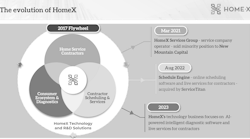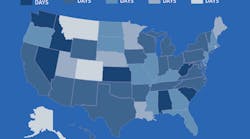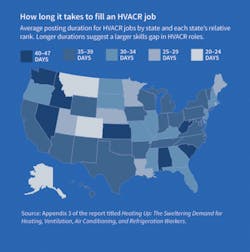A trio of reports released in September by the HVACR Workforce Development Foundation strongly affirm what assorted industry experts have proclaimed for the past decade: the HVACR industry is in serious need of new employees.
A notable distinction in these new reports is the claim that an estimated 115,000 new HVACR employees will be needed by 2022 to meet anticipated demand. This demand for mechanics and installers far exceeds the existing and anticipated supply of heating, ventilation, air conditioning and refrigeration employees.
Due to the increased growth in the sector and the ongoing retirement of Baby Boomers, HVACR programs in technical and community colleges are not keeping up with demand. HVACR employers are having a difficult time filling positions, especially for refrigeration and HVAC technicians, for 36 to 44 days longer than the national average of 29 days for similar positions.
“HVACR programs in the U.S. and Canada are seeking new students, whether you are a recent high school graduate, veteran or second-career adult,” said Kari M. Arfstrom, executive director of the HVACR Foundation. “With HVACR certifications or an associate’s degree, new employees can be assured of a solid middle class job that cannot be off- shored, is high tech, and offers better than average pay.”
The reports detail the opportunities available for HVACR workers and address the unique issues constraining the pipeline for these roles. The report includes a “North American Plan” to reduce the employment gap across the United States and Canada.
An executive summary of the three reports — “The HVACR Workforce: Demand Heats up as Supply Melts Away”— is available on the HVACR Foundation’s website, at
CareersinHVACR.org.
Among the reports’ findings:
Almost 60 percent of HVACR instructors report their programs are under-enrolled and have room for more students.
The reports also cite a “mish mash of national credentials” for both students and HVACR instructors, which is causing the skills gap to widen, and will continue to affect the quality of educational programs.
Proposed “National Plan” Includes:
• Preparation and ongoing professional development of HVACR instructors.
• A central database of qualified HVACR training programs to train instructors.
• Contributions by employers to fund instructor development.
• Get contracting firms involved in establishing curriculum for students.
• Develop effective “school to work” programs for students.
• Agreement across the HVACR industry on establishment of national standards for accreditation and certification.
• Establish benchmarks for HVACR student progress.
• Find ways to attract motivated students into HVACR job training.
• Create mentoring programs, internships, and apprenticeships with HVACR
employers.










